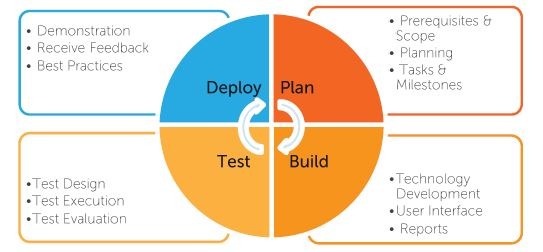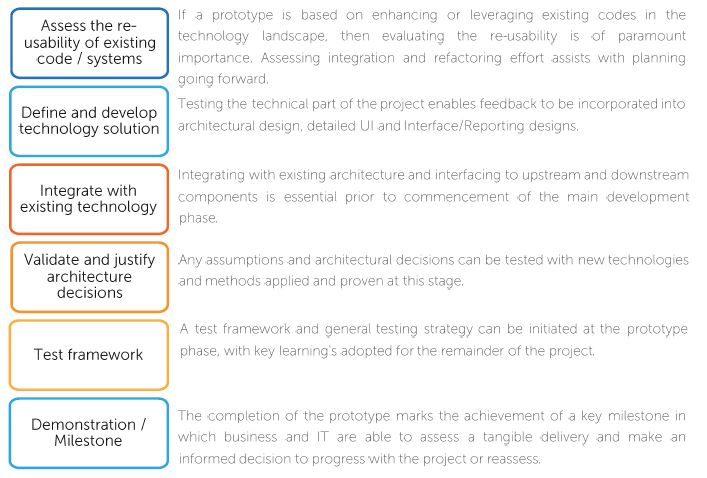Information Technology (IT) solutions are generally an expensive investment that require a substantial amount of lead time from inception to implementation. Prototyping delivers essential cost and time benefits to large scale projects through demonstrating key visual and functional elements and testing a multitude of concepts. A proof-of-concept prototype enables the rapid creation of a product in the early stages of a project. The produced prototype is assessed by both the project team and the client in terms of whether the solution and the approach is viable and feasible. Project teams can gain insight into the proposed technological capabilities and whether proposed estimates, milestones and deadlines are realistic and achievable.
The significance of prototyping is often underestimated, as its key objective is perceived as generating a user interface that represents a basic version of the final product. However, there is much more value added – without prototyping, a tangible product is only created in the latter phases of implementation. This indicates that the effectiveness of agreed methodologies and technical decisions for project success has not been assessed. An inadequate review of technological capabilities and potential solutions is a commonly observed mistake in the industry. These pitfalls may result in an implementation that may be lacking in functionality. This could put the project at risk of budget overrun, delayed go-live, or both.
What past studies say about IT Project cost overrun, delay and failure*
Facts about 1,471 large IT projects studied
- 45% budget overrun
- 7% delayed
- 56% failed to add value
- 17% of IT project failure burdens the company’s survival
- IT projects 3 times more likely to spiral out of control than other non-IT projects
Major reasons for 45% of large IT projects experiencing cost overrun
- Missing focus of project (13%)
- Technology and content not validated or aligned with business (9%)
- Failing to build a strong team (6%)
- Project management issues (11%)
The Brickendon Solution
Brickendon’s RPDM is designed to avoid the common pitfalls observed in a large project environment and to focus on a rapid prototype development. It enables a comprehensive review of technical/functional capabilities and provides proof-of-concept to business stakeholders in an efficient manner.
Implementation of The Brickendon Solution, RPDM, divides sub-tasks into four general areas comprising of Plan, Build, Test and Deploy. This methodology is built to define the right technologies and goals for the project. This also integrates the business and IT expectations at the early stages of the project. RPDM keeps these goals visible, allowing the project team to put the prototype in the wider context of the project deliverables.
Rapid Prototype Deployment Methodology

Brickendon Prototype Goals flow example

Brickendon’s Rapid Prototype Deployment Methodology provides an early objective assessment of a proposed solution. This results in a high quality, low cost implementation, leading to a successful project completion. This yields the following benefits to clients:
Client Benefits
- Insight into whether project planning, estimates, milestones and deadlines are feasible and realistic.
- An early visual and functional demonstration, including testing technology, enables the provision of feedback which can then be incorporated into the development for the final product.
- Tests and proves a multitude of concepts – from business and IT workflow, through defining use cases, to establishing a test strategy.
- A strong emphasis on innovation and trialling of different tools and technical solutions, leading to a best fit choice for a client’s needs.
- Technical and procedural learning points establish best practices and eliminate inefficiencies to keep maintenance costs low
- Alignment between project objectives and the overall business strategy
- Early stakeholder engagement enabling critical decisions to be agreed and made in advance
* Bloch et al (2012) Delivering large-scale IT projects on time, on budget, and on value, McKinsey & Company


